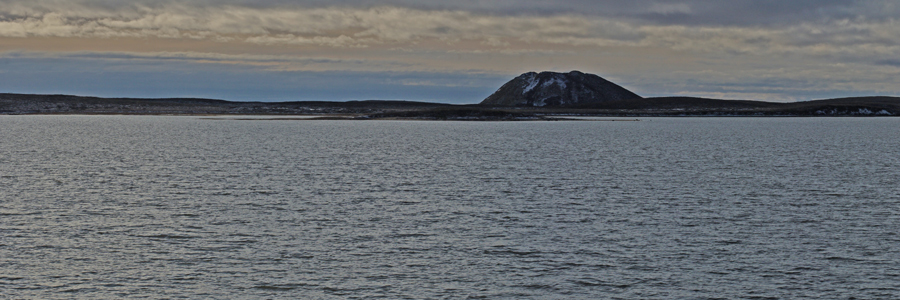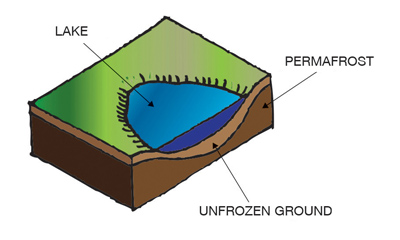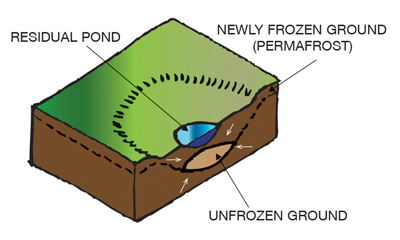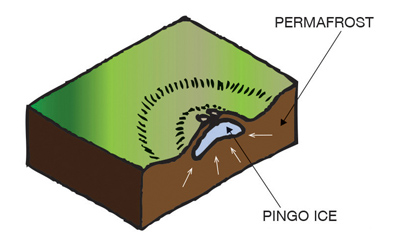
Pingos 101
Pingo Canadian Landmark
Pingos are ice-cored hills that form in recently drained lakes. The unfrozen ground under the lake is surrounded by permanently frozen ground called permafrost. After the lake drains, water in the saturated lakebed expands as it freezes, pushing excess water inwards toward the centre of the lakebed. The pressurized water pushes upwards, lifting a thin layer of ground above it.
Pingos grow up to 1000 years old then begin to collapse to become patterned ground in the tundra.
Average temperatures in the Tuktoyaktuk area range from -27 °C in January to 11 °C in July.
The Inuvialuit people and their Thule ancestors have known pingos for at least 7 centuries, using them as nakataq (navigational landmarks) or nasisaqturvik (lookouts).
Established through the Inuvialuit Final Agreement in 1984, The Pingo Canadian Landmark protects 8 pingos within a 16.4 km2 (4,053 acre) area of land, marine area, and freshwater lakes.
Two of these pingos, Ibyuk (meaning “thick” in Inuvialuktun) and Split Pingo, are some of the largest in the world.
| How Pingos Grow | |
|---|---|
| A layer of unfrozen ground lies beneath most arctic lakes, since they are often too deep to freeze through to the bottom in winter. This year-round presence of water thaws the permafrost. |  |
| When a lake drains, a shallow residual pond is often left behind. The former lake bed begins to freeze, but the remaining water slows the development of permafrost around it. As the lake bed freezes, the water in the ground turns to ice and expands. The extra water cannot escape, so it pushes inward toward the centre, ahead of the freezing front. (see arrows) |  |
| The freezing front advances inward, placing the encapsulated "lens" of water under pressure. The thin layer of permafrost above the lens is pushed upward and the pingo begins to grow. |  |
| The pingo is fully formed and stops growing when it is frozen solid. The unfrozen ground becomes permafrost. Now the pingo's core is almost pure ice. |  |
- Date modified :